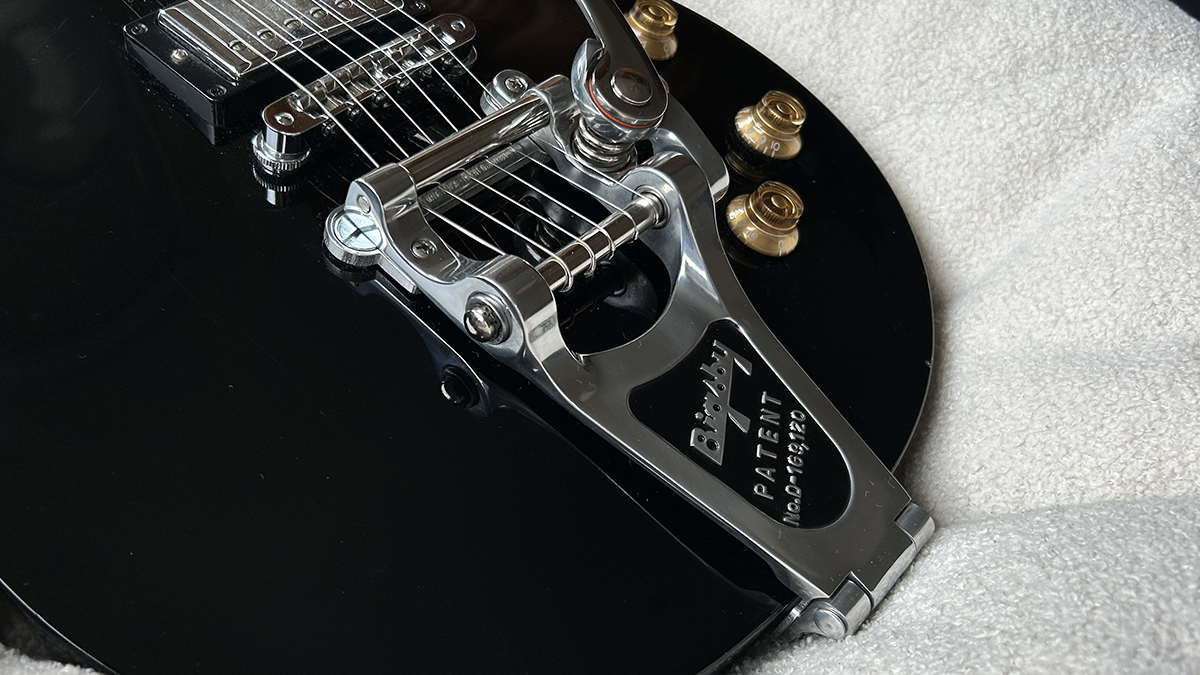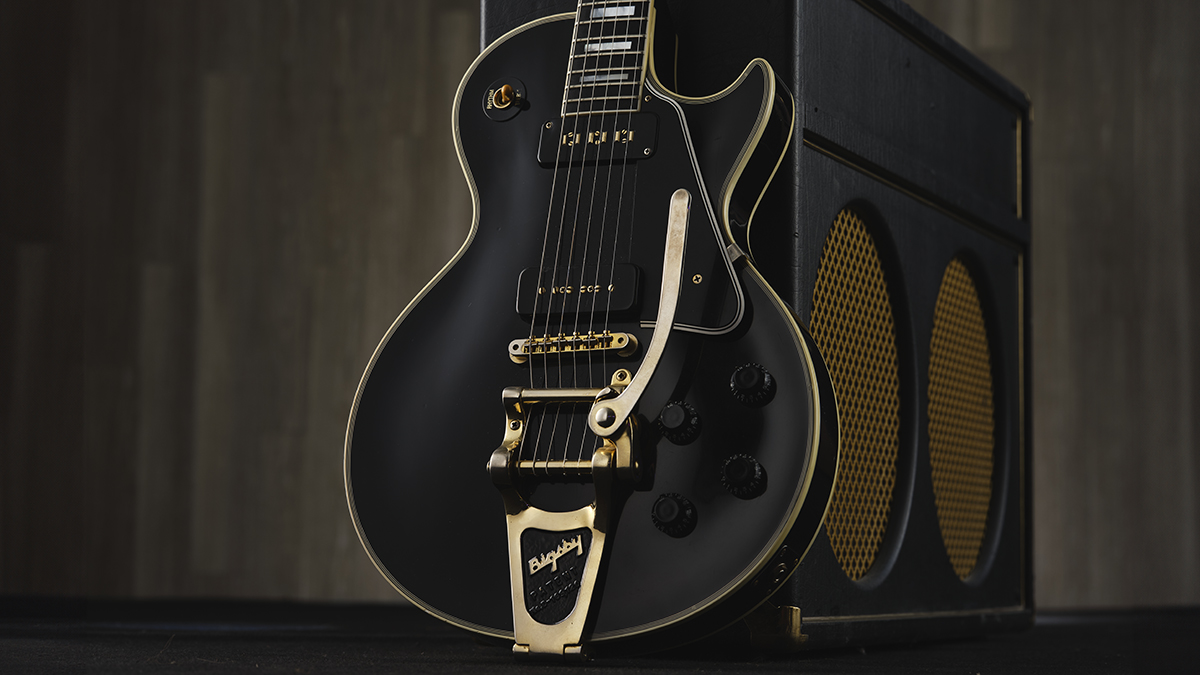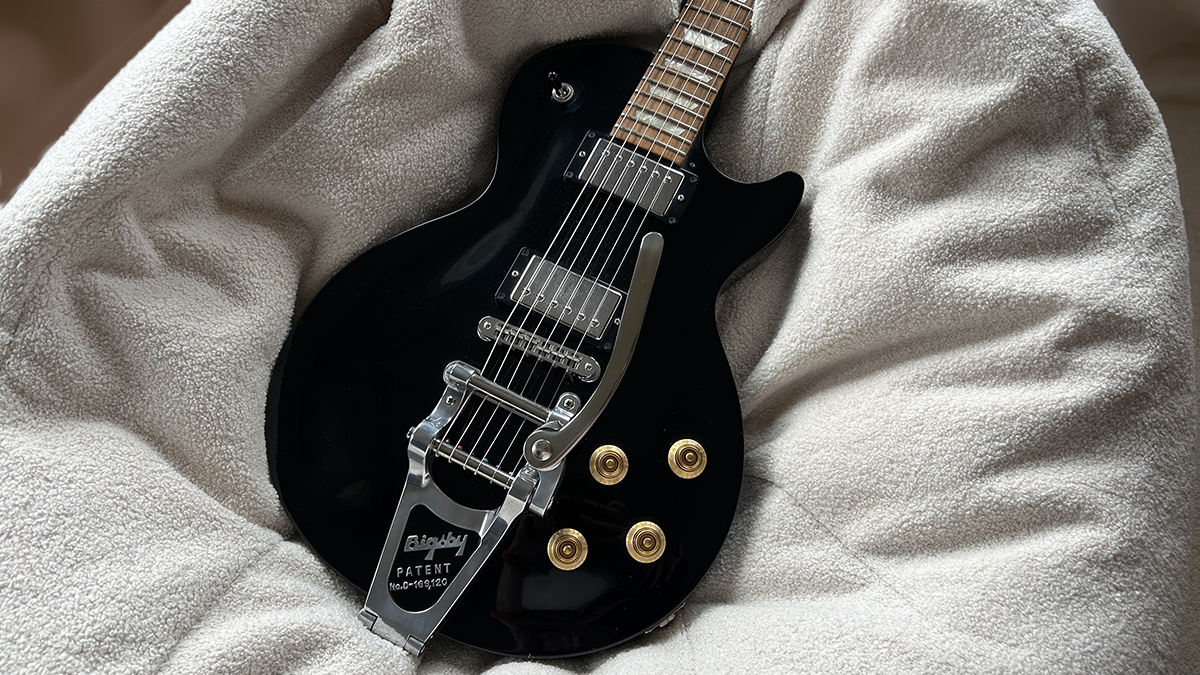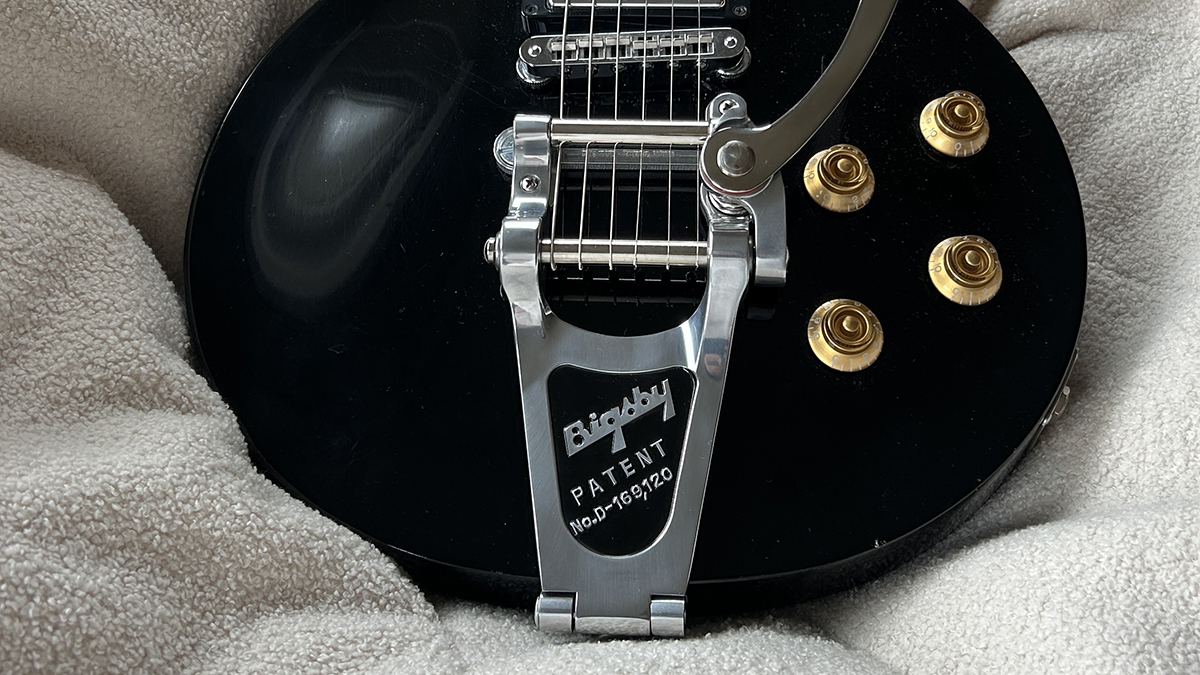“Yes, it did make my guitar look cooler – but it took a bit of getting used to…” I’d always wanted to try a Bigsby, so I put one on my Les Paul. It changed the way my guitar sounded – and the way I played

There’s no two ways about it: Bigsbys are really cool. Stick one on practically any electric guitar, and – at least in my books – its aesthetic appeal will skyrocket.
This observation is especially applicable to Gibson Les Pauls. The Keefburst? Stunning. Jimmy Page’s Black Beauty? Say no more.
Of course, there is much more to guitars than simply how they look, and the Bigsby also brings with it a distinct tonal and performance functionality.
Beloved by trailblazing country and rockabilly pioneers, championed by ‘60s psychedelic blues experimentalists, and revered by contemporary indie artists, the Bigsby works by mounting to the body of guitar via a long (or short) metal plate, attached to which is a spring-loaded whammy arm.
It’s a simple design, replacing a guitar’s existing tailpiece in favor of a no-nonsense vibrato mechanism. There are also potential tonal ramifications, with a Bigsby supposedly bringing with it some unique sonic quirks.
Since I’m such a sucker for the sight of Bigsbys, I decided to finally stick one on my Gibson Les Paul Studio – documenting everything from selection, installation, and performance in the process – to see just how the cherished accessory performs.

Ever since its arrival in 1951, Paul Bigsby's vibrato system has remained largely unchanged. Sure, there are a handful of variants suitable for different guitar models, but the function between them is the same.
Get The Pick Newsletter
All the latest guitar news, interviews, lessons, reviews, deals and more, direct to your inbox!
When it comes to selecting the correct Bigsby for your guitar, you have a bit of leeway. They come in long and short sizes and, according to the brand, "are designed to fit almost any electric guitar".
However, the thought of traditionally attaching a Bigsby to your guitar is a daunting prospect. The Bigsby B7 kit I went for came with some red cotton strings that are required to line the bridge up with the fretboard in order to maintain optimal performance.
A few millimeters off-line and the effects could be very bad indeed. Then there’s the small task of drilling holes into your instrument to attach the Bigsby. Slip up during either of these stages and you could be facing a pretty ugly scene.
Fortunately, such luthier-level mods are now a thing of the past, thanks to the Vibramate. Earmarked as an innovation that changed the guitar world, this gadget negates the need for drilling and tedious alignment in favor of a body plate that does the hard work for you.
The kit instead comprises a metal plate to which the Bigsby is secured, and that fits into the existing Stop Bar mount holes of a Les Paul. It’s anchored using the rear strap button – and that’s it.
As a further plus, the Vibramate is reversible. You won’t be left with drill holes if you decide to take your Bigsby off and give, say, top-wrapping a go.
If you opt to go down the Vibramate route – and I strongly recommend you do – it’s crucial you get the correct Bigsby/Vibramate pairing. There are distinct kits for specific guitars and Bigsby models, and you’ll need to align these correctly otherwise you won’t be able to proceed. Vibramate has a comprehensive model guide to help with that.
If, instead, you wanted to go for a slightly different Bigsby/model pairing, and traditional installation was required, give your guitar to a competent luthier to fit one for you. It's not worth butchering your guitar over.

Securing the Bigsby is only half the battle: the other half is stringing the darn thing. Vibramate offers a ‘String Spoiler’, which makes it slightly easier, but the fiddly orthodox way can be made more attainable with the help of a capo.
Simply thread the string under the roller bar, around the back of the vibrato bar, and hook the ball end of the string on the relevant pin. Then, pull taut, secure at around the 10th fret with the capo, and proceed to string as normal.
It’s quite fiddly at first, but as long as you remember to crimp the ball end of the string to help hook it round the bar – and ensure to use the capo – it’s relatively straightforward.

Now, to the crux of it: how does the Bigsby perform? There are two key aspects to keep an eye on: the vibrato function itself, and how the new attachment affects the overall tone of the guitar. There were also some housekeeping matters, such as tuning stability.
I’ve never been much of a vibrato guy – I rarely use the whammy bar on my Stratocaster – but the bulkiness of the Bigsby immediately gave my Les Paul a nice added weight, and the formidable presence of the thing itself definitely drew me to use it more. And, yes, it did make my guitar look cooler.
It took a bit of getting used to at first, mind. It’s a serious chunk of metal right next to your strumming hand, and when getting to grips with the slab-like vibrato arm it’s easy to knock into it while strumming/picking.
Unlike a Strat tremolo – which can be slackened off at will, swung round and quickly picked up when needed – the Bigsby is stuck firmly in one place, and needs to be physically pushed out the way to make room for playing after it’s been used. This could be solved by loosening the bolt that secures the arm to the Bigsby, but that’s impractical once the guitar is strung up.
Before stringing, have a play with the arm to check its tightness
Keep that in mind: before stringing, have a play with the arm to check its tightness. I would certainly have given it some extra slack had I been a bit more diligent during the original setup. I was clearly too eager to get going.
Similarly, the section where the arm itself attaches to the Bigsby has a small metal notch that stops the bar from swinging 360 degrees. That means it’s slightly trickier to keep hold of the arm while strumming full chords.
Again, whereas a Strat whammy bar can be positioned at any angle, and can follow the full arc of your strum – no matter how wide – the Bigsby has a more set path that stops below the strings. As such, you’ll have to compensate with how you strum and grip the bar.
But, overall, for warbly whammy wiggles, the Bigsby truly excels. There’s a reason it’s been so beloved by countless artists across the decades, and small gripes aside, I definitely warmed to the attachment after a while. Nothing sounds quite like a Bigsby, and to play around with one was certainly a bucket-list moment ticked off.

Tone-wise, there was a notable change. I recently switched to top-wrapping my Les Paul, which I preferred for its openness, sustain and improved slinky feel. Switching to the Bigsby came with its own quirks, and made the guitar behave differently.
The openness and sustain seemed to have dampened, and unplugged the guitar felt like it had lost some of its resonance and oomph. Sonically, it seemed a tad brighter, but nothing too drastic.
There’s no definitive answer for how – or even if – a Bigsby will affect the tone of your guitar, and I found no notice of the widely documented “metallic” sound that supposedly comes from equipping one.
Of course, when it comes to such mods, feeling plays a huge part, and it’s possible that all this simply came down to the way the guitar felt and performed in my hands.
Speaking of performance, I’d be remiss not to touch on tuning stability. Fortunately, once the new strings were broken in, and the guitar had got used to the increased vibrato action, tuning remained relatively reliable for me.
Sometimes, that's not the case. In a lot of cases, roller bridges – saddle-less units that can be easily retrofitted – are recommended to help the string move more freely, if an existing bridge isn't playing ball. And, more often than not, the nut will also need some attention.
So, bear in mind this isn't a one-and-done mod: you might need to conduct some extra housekeeping to make sure everything remains in working order, be that a newly cut nut or bridge replacement.

My final word on Bigsbys? Well, they still look cool as hell, and I certainly had more fun than I expected – but I haven't been bitten by the Bigsby bug. It might be because I'm too late to the party, and so used to playing vibrato-less guitars, but I never quite felt at home using it.
Sure, the tones were decent, and being able to whammy on my Les Paul gave the guitar a nice new edge, but I felt far more connected to the thing when I was top-wrapping.
That's why, if you're thinking about giving a Bigsby a go, it's worth going down the Vibramate route – which means I haven't got any gaping drill holes in my guitar after the experiment to contend with. Plus, I can always give it another go, if the desire strikes again…

Matt is the GuitarWorld.com News Editor. He has a Masters in the guitar, a degree in history, and has spent the last 16 years playing everything from blues and jazz to indie and pop. When he’s not combining his passion for writing and music during his day job, Matt records for a number of UK-based bands and songwriters as a session musician.
“It holds its own purely as a playable guitar. It’s really cool for the traveling musician – you can bring it on a flight and it fits beneath the seat”: Why Steve Stevens put his name to a foldable guitar
“Finely tuned instruments with effortless playability and one of the best vibratos there is”: PRS Standard 24 Satin and S2 Standard 24 Satin review









